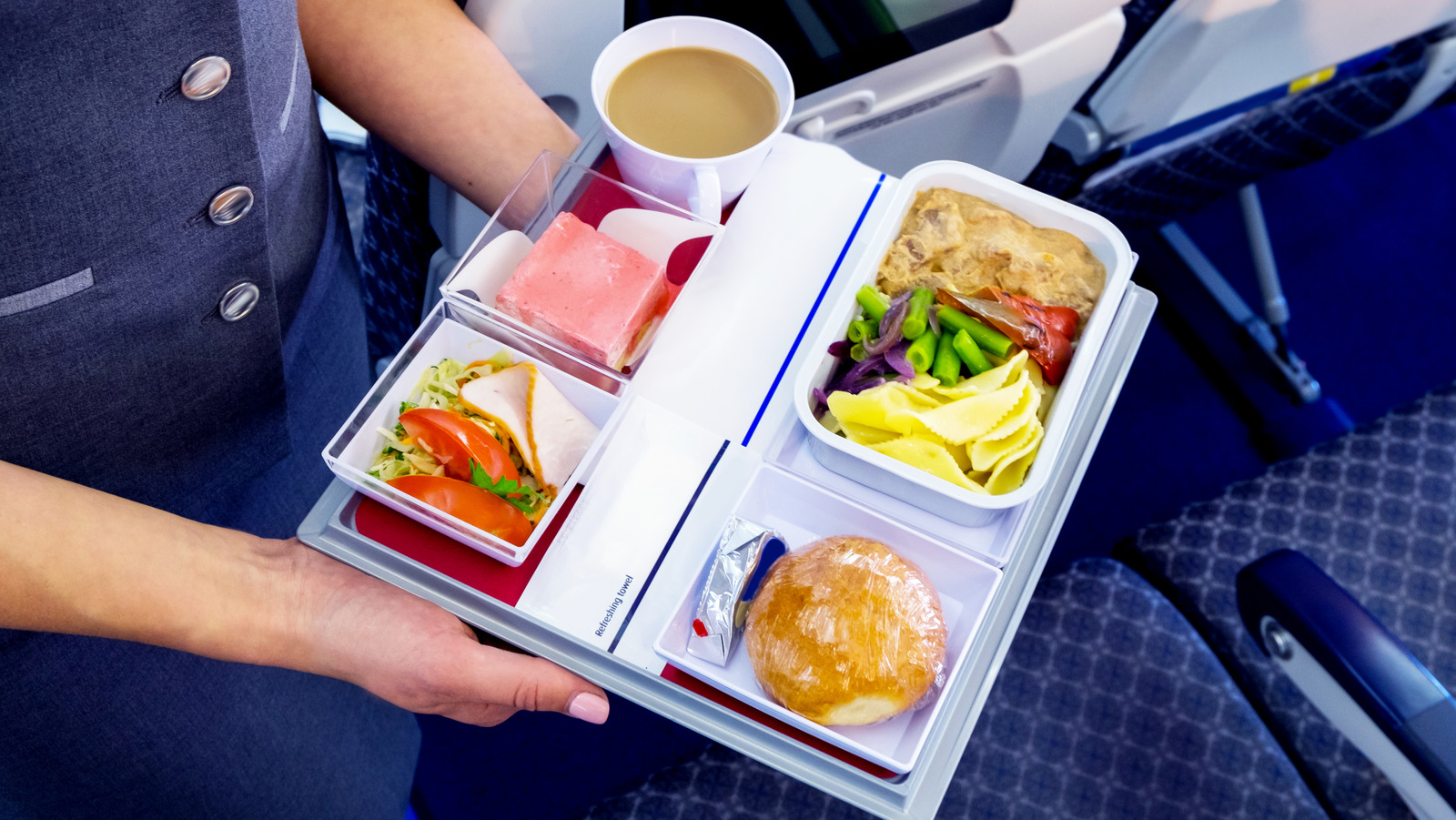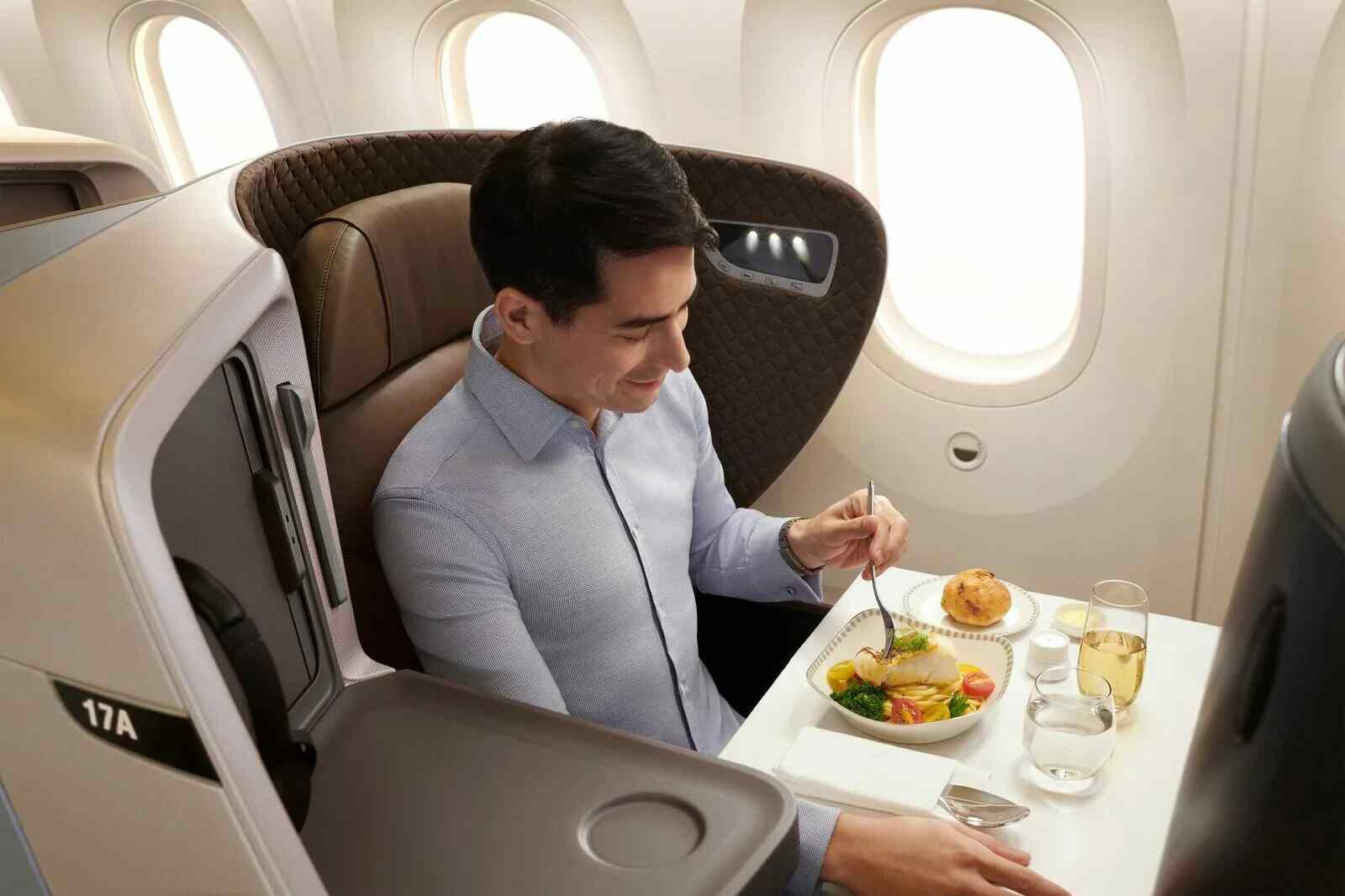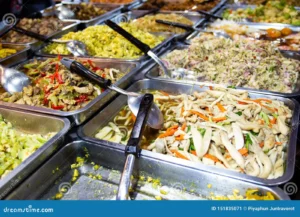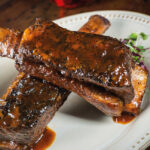For plenty the word “airline food” conjures picas of bland soggy snacks relegated to plastic trays. However how did air journey’s culinary recognition turn out to be so notorious and is it deserved?
Let’s take a closer look at the intriguing history and hidden complexities that shape the modern airline meal.

The Lavish Beginnings of Sky High Cuisine
Inside the early days of industrial passenger flights within the Fifties 60s air travel was a distinct luxury. Airlines competed fiercely to offer the most indulgent onboard enjoy possible. Multi route connoisseur meals have been the norm artfully plated on pleasant china.
Clean elements were prioritized steaks, seafood, and convey sourced from top eating places. One 1955 Pan Am dinner included lobster and whole tomatoes, as described by this retired flight attendant:
“It turned into like eating in a five megastar eating place at 35,000 ft. the eye to element and great of food changed into super.”
Clearly, airline food had a very different reputation in those “Golden Age” years. However, this lavish approach would not prove sustainable as the industry evolved.
Mass travel ushers in industry wide adjustments
By the 1970s, air tour had converted into giant mass transportation thanks to deregulation and cheaper fares. Planes were carrying far more passengers per flight. This shift created new challenges for in flight food service.
Galleys had limited space and ovens were not feasible, restricting hot meal options. At the same time, soaring passenger volumes made labor intensive fine dining expenses prohibitive. Airlines needed affordable yet still satisfactory solutions.
Gradual compromises were made frozen meals replaced fresh, portion sizes decreased as choices simplified. by way of the Nineteen Eighties, the now acquainted “airline meals” stereotype had taken maintain.
While health and safety standards remained strict, the perception of bland, low-quality meals was cemented in the public mindset.
Deconstructing the Modern In Flight Meal Experience
When analyzing airline food through today’s lens, it’s clear the realities are more nuanced. Let’s explore some key considerations behind what ends up on trays 10 to12 miles above the earth:
Strict food safety regulations: The FDA has extensive rules for time/temperature food handling in order to prevent illness. This impacts aspects like shelf stability and non spill packaging.
Limited galley infrastructure: Without ovens or stoves, options are restricted to what can be heated in convection or steamers. Storage is also constrained by tiny galley footprints.
Cost and profit motivations: Food sales contribute minimally to airline revenue. High labor/production costs for elaborately prepared meals just don’t make financial sense for carriers operating on thin margins.
Human factors: Irregular schedules, cramped quarters, and individual tastes mean fully pleasing every diner is unrealistic. Still, some airlines innovate through attentive service and broadened selection.
Has the Reputation Become Outdated
While stereotypes endure, it’s undeniable the airline industry faces stringent unique challenges not present in standard restaurants.
When operators succeed within these guidelines to deliver edible, nutritious and reasonably priced meals doesn’t the “airline food is bad” perception become misplaced?
Premium carriers especially show tasty, fresh options can absolutely exist at cruising altitude. Perhaps it’s time public opinion evolves alongside the true complexities of nourishing air travelers across our vast skies.
In summary, the history of airline food reveals a more nuanced story than its infamous reputation implies. Regulatory, infrastructural and financial realities must be balanced with passenger comfort no easy task.
And while individual experiences may always vary, a full context of the industry illuminates why the “airline food” trope may no longer fit in every case. With care and creativity, the destiny of in flight dining could grow even brighter.
Frequently Asked Questions
Q: Why can’t airlines cook real hot meals on planes?
A: Galleys on planes are extremely small to save space and weight. There isn’t room for full sized ovens or kitchen equipment. Convection ovens, steamers and microwaves must be used instead.
Q: Why don’t airlines just give more snack options instead of meals?
A: Many passengers prefer hot meals on long flights. Airlines also aim to offer value, and snacks alone may seem insufficient compared to the ticket price. Meals are part of the experience airlines want to provide.
Q: Can’t airlines find a way to make tastier, fresher food within their constraints?
A: Some premium carriers are innovating with choices like artisanal sandwiches, updated kids’ boxes, and locally sourced prepared dishes. Improving quality takes creativity within regulations and demands competitive prices. It’s an ongoing challenge.
Q: What can passengers do to improve their own in flight dining experience?
A: Bringing your own snacks is always an option if the airline offerings don’t appeal. You can also contact carriers directly about meal preferences. And maintaining an open mind about all the unique production factors involved can make any meal more palatable!
Conclusion Of Airline Food
In summary, while airline food may never match a restaurant meal, understanding the complex history and hidden realities behind its development provides perspective.
Major changes in the industry necessitated adaptations to foodservice logistics and costs. Safety standards also shape options considerably.
Still, premium carriers demonstrate that quality need not be sacrificed, and individual meals can exceed expectations. With innovation and choice, air travel’s cuisine may come full circle.
Overall, airplane nourishment deserves reexamining any preconceived notions through an informed lens. there is greater than meets the eye at 30,000 ft.














